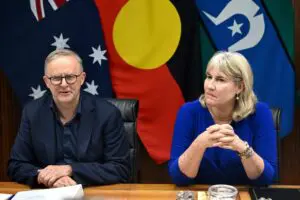How good is energy efficiency!
It’s not fancy, like the “Kim Kardashian” Big Battery, but reducing energy consumption through best-practice building design, the adoption of smart electrical appliances and smart energy management, and retrofitting existing building stock is the easiest and cheapest way to drive down energy sector emissions and power bills. It even creates jobs! And yet it has been glaringly absent from government policies in Australia for the longest time.
But has the switch flipped?
This week, the Victorian Andrews Labor government unveiled plans to spend an unprecedented $797 million on making Australian homes more energy efficient – and, ergo, healthier to live in – by incentivising energy efficient building and appliances.
You can read about the details of the policy here, but some of the stand-out features include:
– A $14 million expansion of the state’s existing Victorian Energy Upgrades program to allow “every single Victorian household” to access rebates for more energy efficient appliances;
– $335 million to fund the replacement of old wood, electric or gas-fired heaters with new energy-efficient systems for low-income earners;
– And $112 million towards sealing windows and doors, and upgrading heating, cooling and hot water in 35,000 social housing properties.
The headline-grabbing policy followed a slightly more modest one from the South Australian government last week, which will spend $60 million on boosting the energy efficiency in government buildings.
So is energy effiency finally catching on? Could Scott Morrison and Angus Taylor get on board? Has the opposition from the legacy utilities – for decades the most ferocious opponents of energy efficiency measures – finally been broken? And will it pass muster in the court of popular opinion?
Luke Menzel, the CEO of Australia’s Energy Efficiency Council, is optimistic.
“We, with many others, have been campaigning since March to ensure energy efficiency is put at the heart of Australia’s (post Covid-19) economic recovery,” Menzel told RenewEconomy this week.
“The consensus on this point, from unions, business groups, community groups and the environment movement, has been remarkable, and underlines the overwhelming evidence that energy efficiency is smart stimulus. And Victoria, to its great credit, has acted.”
The timing of the move is good, too. With most of the state stuck working from home for the winter months, households have become intimately acquainted with their homes’ thermal inefficiencies. Particularly sub-standard, expensive heating and walls and windows that offer meagre protection from the elements.
“One of the most important take-outs from yesterday is that governments are beginning to understand basic energy performance is a consumer protection issue,” Menzel said.
“Australia has double the rate of people dying due to cold weather as Sweden, and our poor buildings are to blame.
“Elderly Victorians are getting hypothermia in their own home, upgrading their properties will make a world of difference to their lives.
“The whole energy efficiency movement in Australia has been focused on broadening the conversation around energy efficiency from cost alone to encompass health, comfort and consumer protection,” he said.
“Organisations like the One Million Homes Alliance, the Coalition for Healthy, Affordable Homes and of course the Australian Sustainable Built Environment Council (ASBEC) have done an outstanding job and it is starting to cut through.”
Another under-sung benefit of energy efficiency measures is the job creation factor, particularly in one of ScoMo’s favourite sectors, the construction industry.
“The International Energy Agency (IEA) calls energy efficiency a jobs machine, and the data backs them up,” says Menzel.
“The Special Report on Sustainable Recovery, produced by the IEA in partnership with the International Monetary Fund, includes a comprehensive analysis of energy related stimulus options. Energy efficiency in buildings – both retrofits and new builds – topped the charts.
“Here in Australia, we’ve run the numbers. A major, national drive to improve the energy efficiency of buildings and industry could deliver over 120,000 job-years of employment.”
Not bad. But what about emissions? Isn’t the shift to renewable energy enough?
“Governments are recognising that energy efficiency isn’t a ’nice to have’, it is a crucial element of the energy transition,” said Menzel.
“The aggregate demand of millions of inefficient homes is a massive barrier to a rapid, cost effective energy transition. It make sense to invest in energy efficiency to accelerate the transition.
“Europe has recognised this, and is planning a renovation wave, with massive stimulus investments focused on ramping up decarbonisation in buildings.
“And we’re seeing households here in Australia getting on board, with electrification, energy efficiency and smart energy management shaping up as the next home energy revolution sweeping Australia.”










